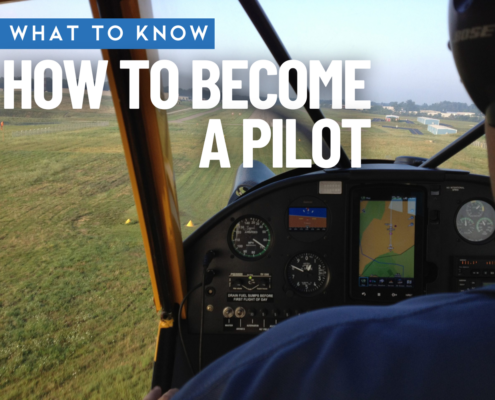
The Most Misunderstood Aerodynamic Concepts
/
15 Comments
Having at least a basic understanding of aerodynamics is important for all pilots and it will be evaluated on the practical exam for a certificate or rating. The further along a pilot is in their certificates, the more advanced their understanding of aerodynamics should be. Pilots should take the time to study this information and be prepared for the practical exam along with being prepared for flight situations that will test the application of their understanding.

FAA Pilot Minute Video: Will Prescribed Testosterone Affect My Medical?
The FAA’s Office of Aerospace Medicine has released a “Pilot Minute” video that addresses the growing use of testosterone therapy and how it can affect your medical certification. Whether you're currently taking testosterone or considering it, it's important to understand the potential impact on your eligibility to fly. In this short video, Federal Air Surgeon Dr. Susan Northrup explains what the FAA looks for and how to stay in compliance.

Pilot’s Guide to Special Use Airspace (SUA)
It's important for pilots to understand the operating requirements and restrictions regarding Special Use airspace (SUA). SUA consists of Prohibited, Restricted, Warning, Military Operation, Alert, and Controlled Firing Areas. All SUA is depicted on aeronautical charts, except for controlled firing areas (CFA), temporary military operations areas (MOA), and temporary restricted areas.

Common Weather-Related Pitfalls Pilots Face and How to Navigate Them
With all of this affordable weather information available, you should have no excuse for not navigating the failure to stay updated pitfall. Even if you don’t have modern connectivity available to you, the old call to flight service or listening to AWOS and ATIS broadcasts along your route should still give you a basic picture of the weather.

How to Become a Pilot: Your Complete Guide to Learning to Fly
Learning to fly will unlock a world of possibilities and give you unparalleled freedom to see the world. It is a truly unique experience—one of the last great adventures in our modern life. It is challenging, rewarding and flat out fun! Some people start flying to make a career out of it, eventually working as a professional pilot.

Avoid These 5 Common ATC Communication Mistakes
Talking on the radio can be one of the most intimidating parts of flight training. Whether it’s your first solo or a cross-country to unfamiliar airspace, clear communication with Air Traffic Control is essential for safety and efficiency—but also a skill that takes practice. The good news? Most of the issues student pilots run into are both common and easily corrected.

Chart Smart: VFR Sectional Concentrated Obstructions
Concentrated obstructions of wind turbine farms are portrayed by an overlying hatched area and dotted outline to represent the approximate parameters of the farm. One or more single turbine symbols will populate the farm. A boxed elevation figure representing the MSL elevation of the highest wind turbine within the area is placed inside the farm or, if space is limited, just outside.

Flight Training for Young Pilots: How to Start Flying Early
If you are not a pilot or don’t have easy access to one, the EAA’s Young Eagles program may be an option for a free first flight if your child is 8-17. Your child will also receive several other free materials and opportunities through this program. You might also be able to book a flight experience with a local flight school or ride operator.

Pilot training experience requirements—just do what the regulation says!
The crafty, creative CFI thought it would be a great opportunity for the student to get in some practice at another airport. In this case, he had the student grab another airport (a 4th) along the way. They thought that the student doing another landing at Marion (KMWA) would be some good additional experience for them at a towered airport. They aren’t wrong about that, but in a strict sense, it now means that cross-country solo flight doesn’t count toward the experience requirements for a private pilot certificate.

Mastering Stalls: How to Recognize, Prevent, and Recover Safely
The recovery procedure is the same as for all stalls. Reduce the angle of attack, add full power, and maintain directional control using coordinated rudder and aileron pressures. As you might expect, recovery from the full stall will require a lower pitch attitude to avoid the secondary stall and the altitude loss will be greater. As speed increases, retract the flaps- be sure that you have reached the best rate of climb speed before the final flap retraction.

